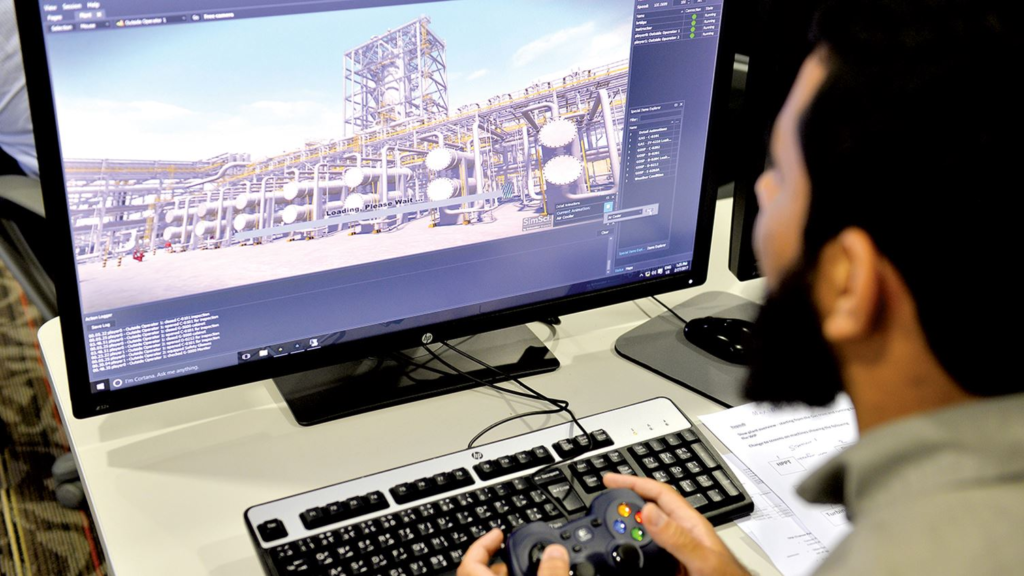New kind of knowledge transfer

Using virtual reality to train and prepare young workforce.
Saudi Aramco’s Southern Area Oil Operations (SAOO) management gathered in Abqaiq recently to inaugurate a new 3-D Operator System Training Center with a new generation of oil and gas operators with a unique form of training that provides real-world incident training in a safe and engaging environment.
The system utilizes the latest Oculus Rift Virtual Reality (VR( headsets and standard computer game controls, giving outside operators an opportunity to virtually “walk” through a generic gas-oil separation plant, a gas and condensate processing plant and a water injection plant. In a typical training scenario, operators encounter a number of process disruptions — ranging from a simple instrument malfunction to a serious loss of containment incident — to which they must respond and resolve.
During the inauguration — attended by SAOO vice president Khaled A. Al Buraik, Southern Area Producing general manager Yousef A. Al Furaidan, and other SAOO managers — training center team members gave management a brief introduction to the project, a demonstration of the system, and a chance for managers to try the VR technology for themselves.
“This new center is exactly what we need to engage the younger generation of operators,” said Al Buraik. “They’ll be able to work through this training and see what is happening inside the equipment, and understand what can happen and how to respond.”
A tool for knowledge transfer
Virtual-reality tools and high-definition, 3-D computer graphics provide a powerful solution to a major companywide challenge — how to transfer knowledge from an experienced older generation of employees nearing retirement to a younger generation of operators, technicians, and engineers who are rapidly taking over major operational responsibilities in Saudi Aramco’s plants and facilities.
Traditional simulators were used for training operators but with VR also outside and control room operators, maintenance people and engineers can be trained. VR allows outside operators to work with control room operators on the same scenario, and it helps to build teamwork. In addition, VR allows operators to see what is happening inside a vessel. You can visualize what is going on during a process, which helps operators to understand how the machinery works and how they should respond.”
A wide variety of scenarios
Matthew Hope, a training supervisor with SAOO Manpower Development, and project leader on the center, said the training center can offer 33 different scenarios with up to six different malfunctions available in each scenario for operators to encounter. The training program tracks the performance of operators and identifies certain skills that need to be enhanced or strengthened.
“This system allows us to bring the employees in and train them, and they can do it 1,000 times if necessary,” Hope said. “We simulate events and watch how these employees respond to them, and then we can look at their scores to see areas that need improvement. And best of all, we can do all of this in the safety of this room, even before they enter a plant.”





 Email: info@cyber-gear.com
Email: info@cyber-gear.com